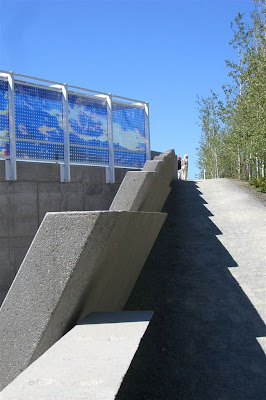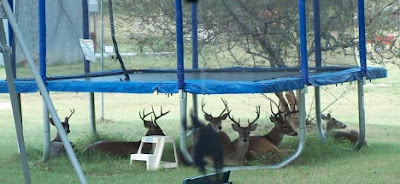
:: Battery Park City Garden by Piet Oudolf - image via The Battery Conservancy
The issue with planting design, or any other form of landscape specialization, is that it makes you an expert at the expense of other vital skills. Does this diminish planting design? Perhaps... a bit, but the profession, as many point out, requires a high level of generalized knowledge, and aside from focus on a particular project or area of specialization, it is hard to gain depth in this wide swath of topics. Is the basis of our profession plantings, or is it synthesis of ecology, art, and science in the creation of spaces for people, which plantings is one, critical aspect?
This is not to diminish plants, and our need to understand them more and use them better. This goes for all materials, as craft involves an intimate knowledge of the tools at hand. Plants are tough. They go in small, grow, die, get to0 big, evolve, and always, change. There is a tacit assumption that, much like architecture, when it's done you walk away, and maintenance budgets reflect this. How many projects do you know that have future funds for planting, thinning, and changes after final completion?
This should be a challenge, as well as an opportunity. The trend towards Landscape Urbanism and addressing temporal change - acknowledging that there is and will always be change, and establishing fields in which these can evolve and flourish. While still a conceptual framework, it is an interesting approach. Thinking of landscapes not as static objects but as gardens that need to be tended and adjusted - perhaps would create new expectations and much better results.
Another aspect of the discussion is, whether to include a horticulturist and plant expert on a team, in addition to the landscape architect. For specific projects it makes a lot of sense, particularly ones with horticultural complexity. In this regard, a number a recent article 'A Landscape in Winter, Dying Heroically' in the New York Times, profiles the techniques of Piet Oudolf, who is the originator of a gardening style dubbed 'New Wave Planting' which couples ecology and design alongside an appreciation for structure and form.
Aside from his prolific writings, he has collaborated with many high-profile LAs on projects such as the High Line with Field Operations, Millenium Park with Kathryn Gustafson. He has also done extensive work at the Battery Park Gardens in NYC.

:: The High Line - image via Cool Hunting
This knowledge and approach gets the attention of high-profile LAs like James Corner, who is working with Oudolf on the High Line. Quoted from the NYT:
"Most people think in a formal way: if you put A and B with C, it will look like this — but only at a certain moment in time,” said James Corner... one reason he asked Mr. Oudolf to do the project’s planting design is that the way he selects and composes plants “...is thought through not only in terms of summer, but also in terms of winter — all 12 months are interesting.”
The article outlines the concept of death, decay, decomposition (coupled with dormancy) and the full season changes and ebbs and flows of plantings in Oudolf's private garden.



:: images via The New York Times
This aesthetic is counter-intuitive to the Picturesque and Romantic notions of planting design strategies. This is perhaps why Oudolf has caught the attention of more cutting-edge designers, and landscape urbanists, like Corner and Charles Waldheim, both of whom are quoted. Waldheim's reference to Oudolfs abilites to set a new course in planting design, again from the New York Times: "He’s gotten away from the soft pornography of the flower. He’s interested in the life cycle, how plant material ages over the course of the year and how it relates to the plants around it."
Knowledge is a life-long thing. Learning from masters, experimenting, continually learning are all good things. Accepting that landscape architects are not 'plant people' is not. Learn the plants, go to the nursery and arboretum. Take classes. Then you can refine and test, and put forth new approaches and aesthetic sensibilities such as Oudolf mentions in the article: "You accept death. You don’t take the plants out, because they still look good. And brown is also a color.”

























